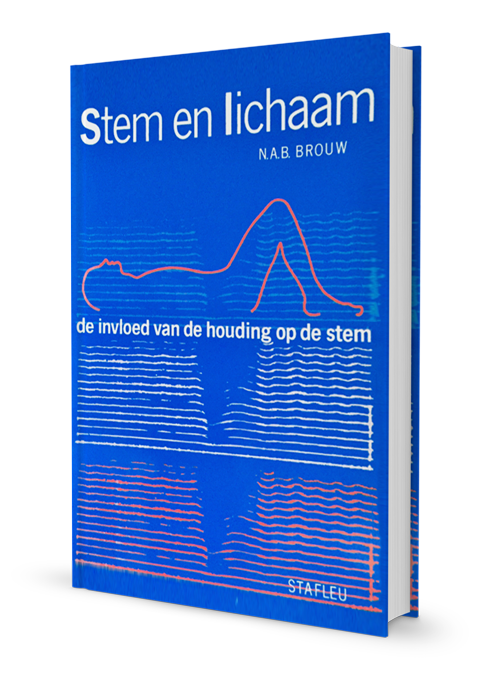
Stem en Lichaam [“Voice and Body”]
‘Singing is a sport at the highest level and as such requires medical, diagnostic and therapeutic guidance of body and mind’ This proposition concludes this book, which is a record of research into the development of body and mind required for vocal expression and its objective measurement. This research has been undertaken on behalf of the Dutch Ministry of Wellbeing, Health and Culture. The research is founded on knowledge of the manual healing arts and the muscle reflexes.
The examination of the internal influences acting on various anatomical structures have led to interesting results. While the general conclusion is that the approach and therapy described should be recommended for use in all voice academies, the described techniques are also deemed useful for other professions, giving this book a broader perspective than the title might suggest.
‘Voice and Body’ is specifically aimed at singers and voice teachers, at doctors who are interested in manual therapy and at physiotherapists.
Introduction
Singing is a form of physical expression requiring a posture that is as free as possible. The influence of the body’s posture on the vocal cords is easy to test, for example, by rocking back and forth from your heels to your toes while trying to hold a constant tone. While doing so, you will notice that the tone changes. However, in the case of certain postural reflexes, a change in posture should not automatically cause a change in voice quality.
To investigate the scientific composition of the body and the mind in support of vocal expression, I turned to the fields of musculoskeletal medicine and muscle reflexology. Manual medicine consists of the treatment of deviations in the position of the vertebrae and joints and restoring functional movement of the joints. Muscle reflexology refers to the relationship between contracting muscles and relaxing muscles. The aim of the study was to use this knowledge to influence the functioning of the vocal cords.
The problems addressed in the research were not so much related to singing technique through use of the vocal cords, nasal cavity, diaphragm, tongue or pharynx. These are already well known in the world of singing and, furthermore, I am not sufficiently competent to be a judge of such aspects. Instead, the aim was to further investigate inner factors that influence these anatomical structures.
The research was conducted in Antwerp among a group of male and female singers, consisting of students and pedagogues of the conservatory. This group committed to participating in the study for a two-year period in order to guarantee the continuity of the research. Vocal pedagogue Lucie Frateur did the voice guidance and the sonographic examination of the voice.
The project started in October 1978. It began with one day per week to document the physical examination and the composition of the posture of the singers. Mid-1980, the frequency was adjusted to once every fourteen days and, after the general composition, a more individual-oriented approach was taken with regard to the specific posture of the singers. The results were recorded. To conclude, the previous postural corrections were implemented during the singing lessons and while singing. The project lasted until January 1981.


